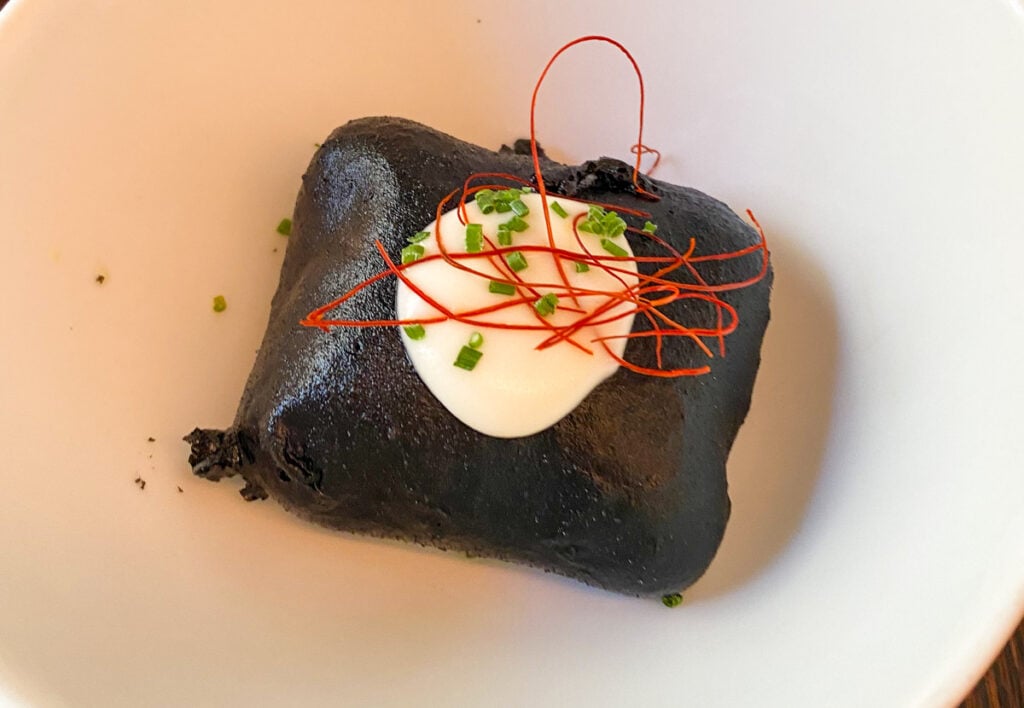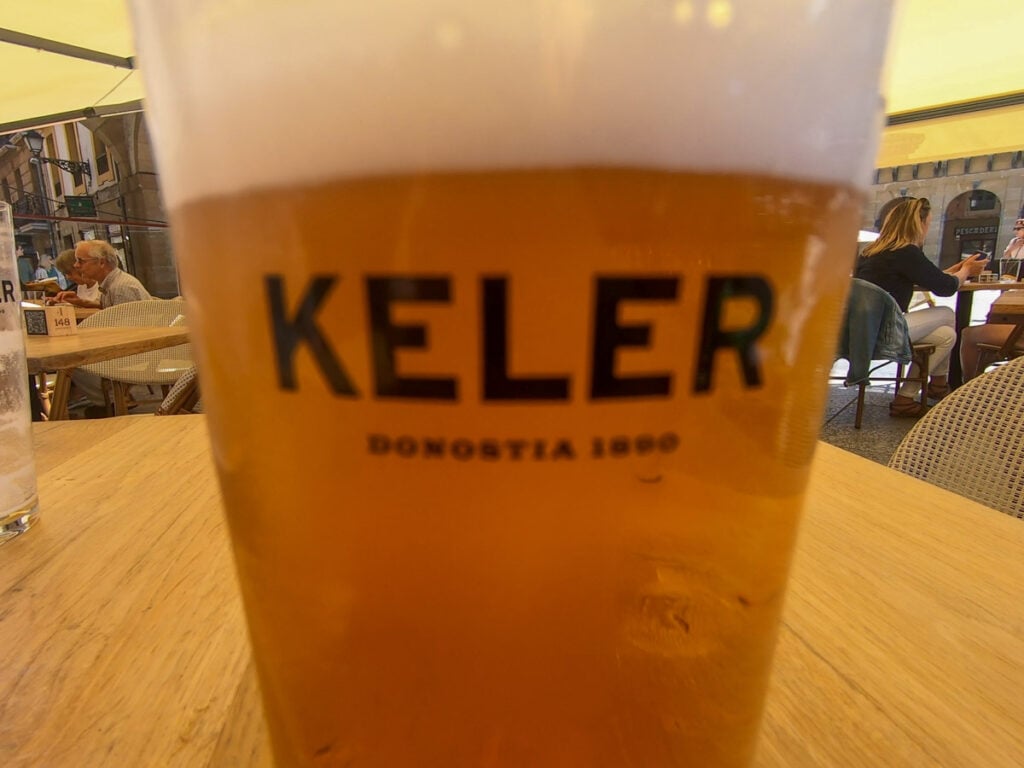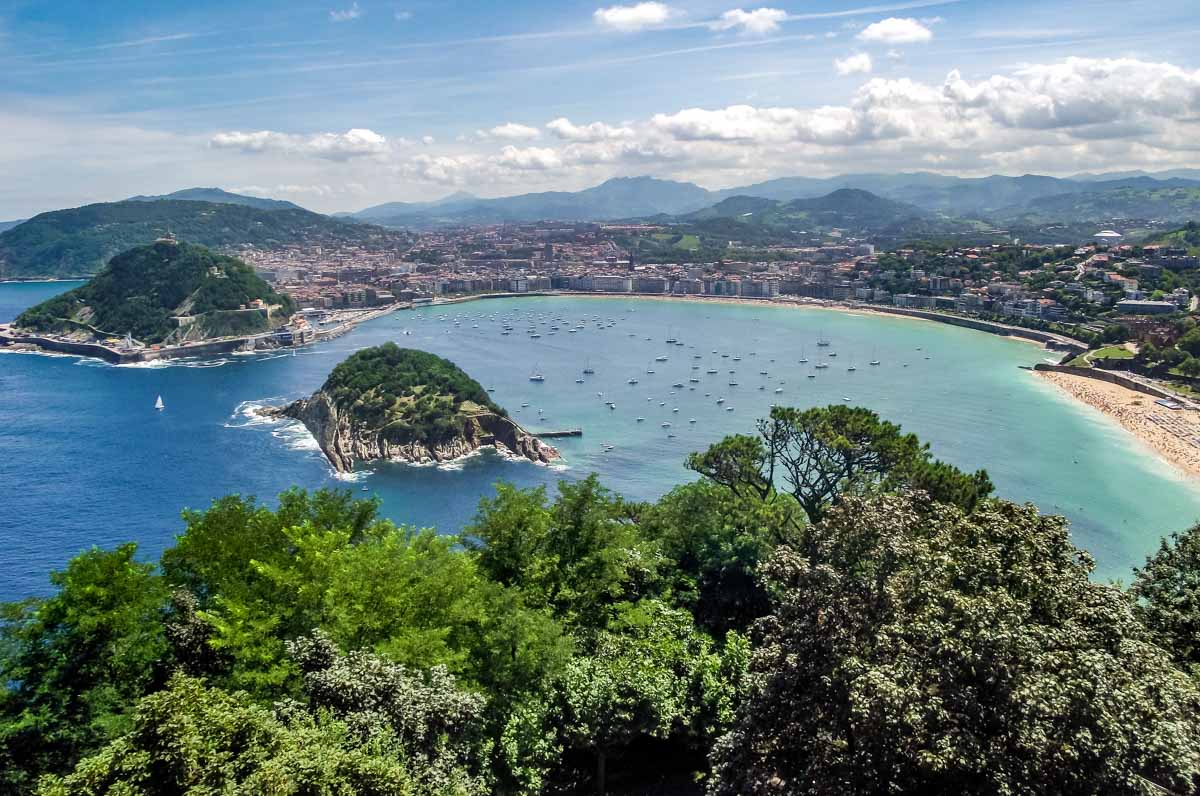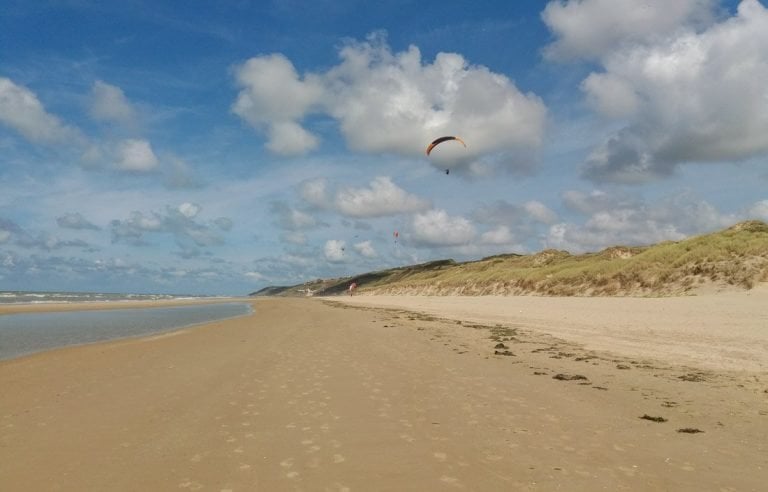San Sebastián – or Donostia, to use its Basque name – may well be the best place to eat in Spain. It is a bold statement, yet I may go a step further and suggest it could be the best food destination in the world.
The Thais, Indians, and French may have something to say about that, but San Sebastián is most definitely a city you should experience if you love food.
I first went to San Sebastián 8 years ago and immediately fell in love with the city. It has everything I want in a holiday destination: an historic old town; a clean and modern city; beautiful beaches; the best sunsets, walking routes; mountains nearby; and, of course, the most amazing food.

What are Pintxos?
Pintxos is the Basque spelling of pinchos and comes from the verb pinchar, which means ‘to pierce’ and gives us a clue to what a pintxo is.
A pintxo is a small snack, usually served on a small piece of bread with the tasty stuff on top, skewered together on a cocktail stick. Not to be confused with tapas, which are small plates, pintxos are found in northern Spain, particularly in the Basque Country, and invented in San Sebastián.

The first pintxo was the ‘Gilda’ – an olive, pickled guindilla peppers, and an anchovy held on a stick and named after a Rita Hayworth character.
Although traditionally served on a stick and eaten in a couple of bites, pintxos have evolved with hot pintxos in particularly coming stickless, and providing some of the best examples of Basque cuisine.
The most important thing to know about pintxos is that they are delicious.
Pintxo Bar Know How
To make the most of your time in San Sebastián, you should do as the Basques do and take a ‘txikiteo’ – a pintxo bar crawl where you have a couple of pintxos and a small drink in each place, and then move swiftly on to the next location.
Most pintxo bars have an array or beautifully crafted and colourful looking cold pintxos on display, but my recommendation would be to skip these, and focus your eating efforts on the hot pintxos and raciones.

The good stuff is always on the boards behind the bars and on the walls. If in doubt, ask one of the staff what the ‘especialidad’ is. Each bar will usually have a couple of specialties that they will be particularly well known for, and the staff will be more than happy to guide you to them.
It is tricky sometimes to work out the system at each bar and things have certainly changed in the post-covid era. At some of the busier bars you will have to shout your order across the bar, and you will be asked to pay as you go.
Some will give you a device that will buzz when your hot pintxos are ready to collect. Others have more traditional table service, and some have a combination where you can order hot food to the table and ask for a plate to go up to the bar to choose the cold pintxos you want.
Tables are at a premium in the busier places, so standing and eating in a tiny space is often the way to go, but also part of the experience and a wonderful way to soak up the atmosphere in these lively bars.
The best places to eat
You can walk through San Sebastián having done no research whatsoever and you will eat great food, but a little research will pay dividends for you.
There are great Michelin starred restaurants in the town such as the famous Arzak, but you do not have to spend a fortune and book 6 months in advance to eat great food in this city. Here are some of my favourite pintxo bars to eat in and some of the best dishes to try at each:
Gandarias, Parte Vieja (Old Town) San Sebastián
This lively bar located at the top end of the old town is one of my favourites and does the best solomillo – a small piece of well-seasoned fillet steak served on a piece of bread, topped with a sliver of green pepper. Delicious!

La Chuchara de San Telmo, Parte Vieja
Small, always busy, but worth waiting for as this place does incredible food. Everything is made to order, and you will have to shout your order across the boisterous bar area. All the dishes here are excellent, but the slow cooked veal cheeks (carrilleras) are to die for.

Bar Néstor, Parte Vieja
You will do well to get a slice of Néstor’s famous tortilla as they only make two a day. You must order this in person before they even open and there is always a queue.
Instead, head in later when you will be able to find a table or bar space and go for the xuleton and their tasty tomato salad. Why are the tomatoes over here so much better than the ones we have at home?

If you like steak, then you must try these huge bone in rib steaks in San Sebastián and Néstor cooks them perfectly. The friendly staff will bring out a choice of two slabs of raw meat to choose from and then the next time you see it will be when it arrives beautifully seasoned on a sizzling hot plate.
Bodega Donostiarra, Gros
Do not overlook Gros. This residential area behind Zurriola beach is where the locals eat and has some of the best eateries in the city. Bodega Donostiarra, spills out onto the street and offers super tasty pintxos.

Try the ‘Indurain’ named after the famous Spanish cyclist, a piece of tinned tuna, pickled guindillas, salted anchovy, and an olive. The pulled beef in tomato sauce – carne cocida con tomate – is also excellent.
Bar Bergara, Gros
This bright and bustling place has award winning pintxos, such as the txalupa – an unusual mix of grated mushrooms, prawns, cream, and cava presented in a pastry boat.
The desserts here are also worth investigating.
Ganbara, Parte Vieja
A small but incredibly busy place that has people queueing out its doors for its famous mushroom dish topped with an egg yolk. They also do a superb crab tartlet which is my recommendation.

Other Options
These are just a small selection, but there are so many good places to eat and so much lovely food to choose from. As is the case across Spain, the seafood is excellent everywhere and I will always be on the lookout for well-cooked hake (merluza in Spanish) or bacalao.

Casa Vergara in the old town does all manner of bacalao raciones and pintxos so it is worth popping in there if salt cod is your thing.

Look out for places where the tomato salads are popular, along with plates of fried fresh guindilla peppers, which are a uniquely Basque thing and allow you to play spicy pepper roulette to find or avoid the hot ones.

¿Para beber?
So, what are you going to wash all that lovely food down with? Well, your drink choices are no less short on quality and are well-priced. Most places will serve rioja as the house wine which will be cheap and good.
It is usually slightly chilled which some may find a little unusual, but that is the custom, and you soon get used to it. The Rioja region is just to the south of the Basque country, so most restaurants are well stocked with a range of fabulous reds along with wines from nearby Ribera del Duero and neighbouring Navarra.
At some point you will see a waiter pouring white wine from a great height into a large tumbler not usually recognised as a vessel for wine.
Txakoli or txakolina is the sharp, acidic, slightly sparkling white wine from the Gipuzkoa region. It works wonderfully well with fish and seafood and its relatively low alcohol content will not have you bouncing off the old town walls. The wine is poured from high to increase the aeration, but it also allows the bar staff to show off their pouring prowess.
The local cider – sidra – is also cascaded from a great height into the waiting tumblers below, and of course cold beer is available on draught everywhere.

I was pleasantly surprised by how much non-alcoholic beer was available on draught with Ambar from Zaragoza being a particular favourite. If you are into your craft beers then the bars of Gros generally have more options, but you can find interesting beers across the old town too.
The Beaches
At some point you will need a break from all of that eating, and on sunny days La Concha beach is the obvious place to catch some quality time for lying about.
The sweeping bay is spectacular, especially when viewed from one of the nearby vantage points such as Monte Igueldo, and is packed full of bronzed bodies when the sun is out.

The north coast is tidal, and when the tide is out the beach turns into a human highway as people venture from one end to the other, dipping their toes in the water along the way.
Although the sea is shallow, the Atlantic north coast is a little chillier than the Mediterranean so if you decide to go for a quick dip then it could be a full-on Wim Hoff cold water immersion experience depending on the time of year you are there.
Where La Concha beach ends, Ondaretta beach begins, and it is worth walking to the end to visit the Peine del Viento sculpture, or take the cable car up to Monte Igueldo for the marvellous views across the bay and the strange little fun fair at the top.

On the east side of the city, the smaller Zurriola beach has a younger vibe with surfers catching the waves that break close to the shore, while beach volleyball games go on in the background.
Other Things to Do
The Centro area of San Sebastián has plenty of places to shop with leafy pedestrianised walkways and roadside coffee and cake shops. The Basques love their pastries and sweets as much as their pintxos, and Centro and Gros are lovely areas to wander around.

The cathedral and the churches around the city will be of interest to some, and San Vincente Church or the Basilica of Saint Mary in the old town are both worth a visit.

Both Spanish and Basque names for the city, San Sebastián and Donostia mean the same thing – Saint Sebastian – and a statue of the saint can be seen below the clock outside the Basilica.

During the football season devotees of a different kind will don their blue and white stripes and flock to the Anoeta Stadium – or the Reale Arena as it is currently known – to watch Real Sociedad play. You can buy tickets for most games at the stadium itself, and there is a great atmosphere in the packed bars around the are before the games begin.
Walking up and down the beach, or up and around Monte Urgull, will be enough for most, but you can extend your walking from the city along the coast. A 3-hour trek will take you to the fishing village of Pasajes, where you are likely to cross paths with pilgrims on the Camino de Santiago or the St James’ Way, an off-shoot of which passes through this area.

Getting There
The best way to get to San Sebastián is to fly to Bilbao Airport and then take the Pesa bus that leaves directly from the airport. The bus runs every hour for most of the day It takes 1h 15m to get to San Sebastián, and the 17€ per person one way tickets can be booked online. You can also hire a car, but unless you plan to do much travelling outside of San Sebastián during your stay then the coach will be your best option.








